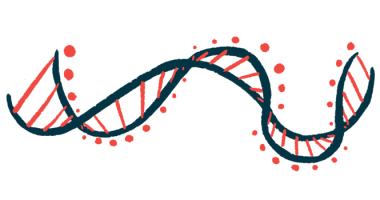Rare Case of Cushing’s Due to Tumors on Both Adrenal Glands

A 43-year-old woman developed Cushing’s syndrome due to bilateral adrenal adenomas, or a tumor on each of her two adrenal glands, according to a recent case report.
“Although Cushing’s syndrome due to bilateral adrenal adenoma is rare, it should be considered in mid-aged females with typical symptoms,” researchers wrote.
The report, “ACTH-independent Cushing’s syndrome due to bilateral adrenocortical adenoma: a case report,” was published in the journal Radiology Case Reports.
Cushing’s syndrome is a condition in which large amounts of cortisol are produced by the adrenal glands sitting atop the kidneys. Sometimes, this is caused by an excess of adrenocorticotropic hormone (ACTH), a hormone that drives the adrenal glands to produce cortisol.
In other cases, however, Cushing’s syndrome is triggered by a tumor in the adrenal glands that releases cortisol. This form of ACTH-independent Cushing’s syndrome, which is driven in most cases by a single (unilateral) tumor in the adrenal glands, accounts for 15%–20% of cases of endogenous Cushing’s — forms of the disease in which the overproduction of cortisol is driven by the body and not by external factors, like certain medications.
However, in rare cases, ACTH-independent Cushing’s syndrome may be driven by bilateral adrenal adenomas, or a tumor on both adrenal glands.
In the study, a team of researchers in Syria described the case of a 43-year-old woman who developed ACTH-independent Cushing’s syndrome due to bilateral adrenal adenomas.
The woman visited the hospital with complaints of fatigue, lower back pain, weight gain, and a lack of muscle strength and menstruation. For three years, she had high blood pressure (hypertension), which was not under control despite the use of medication.
An examination revealed she had ecchymosis (skin discoloration due to bleeding underneath), thinning of the skin, purple stretch marks (striae), excessive fat accumulation between the shoulders (“buffalo hump”), leg swelling, and muscle weakness.
Blood tests also revealed she had high sugar levels after an overnight fast, and low vitamin D levels. Cortisol levels — measured late at night, when they are normally low — were high. These findings were consistent with a diagnosis of Cushing’s syndrome.
To determine the cause of her high cortisol levels, the researchers looked at the levels of ACTH, which were low. They found that cortisol levels remained high after a cortisol suppression test, in which a medication called dexamethasone is given to see if a drop in ACTH levels has an effect on the amount of cortisol produced by the adrenal glands.
Collectively, these findings indicated the patient had a form of Cushing’s syndrome that was independent of ACTH.
The next step to determine the cause of the patient’s high cortisol levels was imaging her adrenal glands. A CT scan of her abdomen revealed two adrenal masses — one on each adrenal gland — measuring about 3–4 cm in diameter.
A laparoscopic bilateral adrenalectomy was then performed to remove both adrenal glands, which led to a reduction of her cortisol levels. Upon closer inspection of the tissue forming the masses, the researchers concluded that they were adrenocortical adenomas, which are benign tumors that form on the cortex, or outer layer, of the adrenal glands.
The patient was started on oral prednisolone to replace cortisol, fludrocortisone to replace aldosterone (another hormone also produced by the adrenal glands), and metformin to lower her blood sugar levels. She was also given a supplement of calcium and vitamin D3.
Her fatigue and muscle weakness eased, and her blood sugar levels and blood pressure dropped to a normal range.
“ACTH-independent Cushing’s syndrome is usually due to unilateral adenoma,” the researchers wrote. “A rare cause of it is bilateral adrenal adenomas.”








